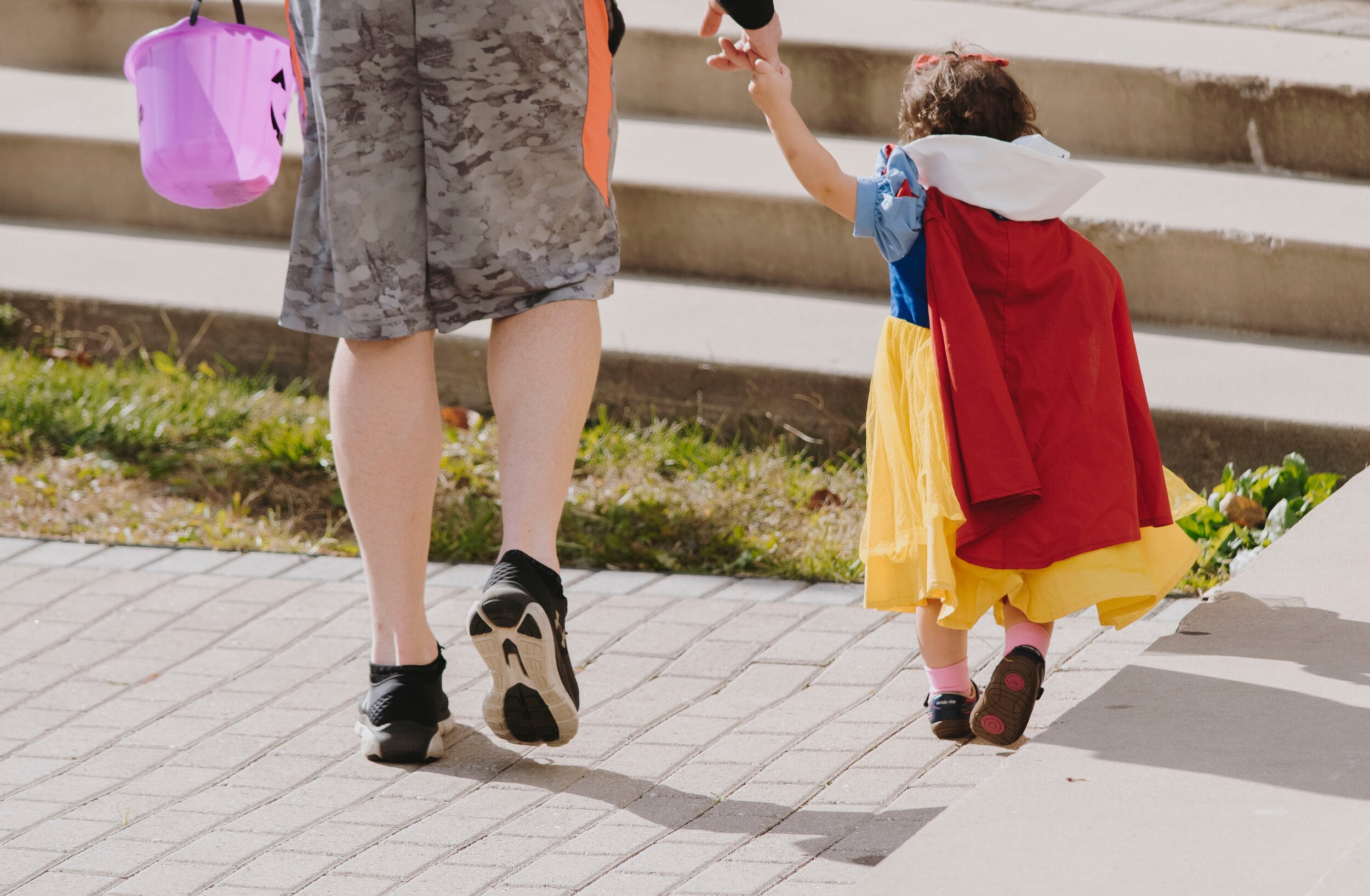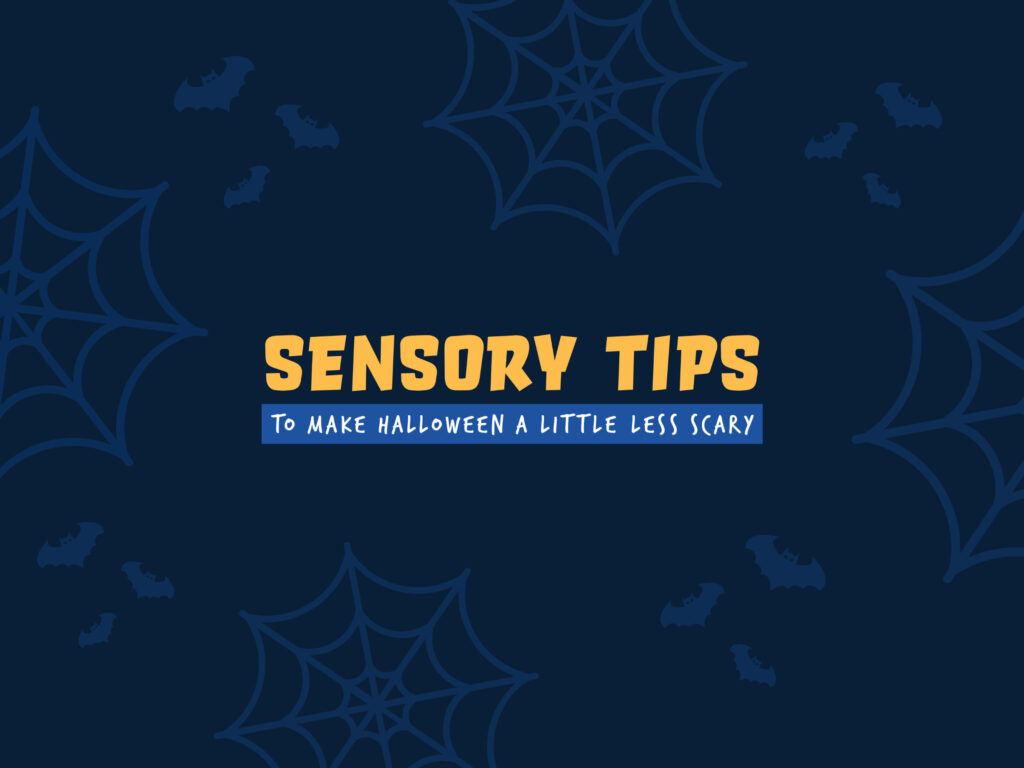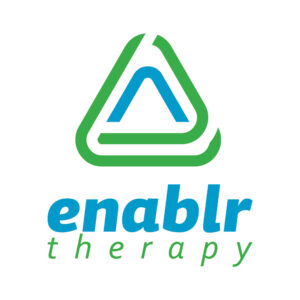
Halloween can be a lot of fun for kids as they wear imaginative costumes, go trick-or-treating and indulge in a wide variety of treats and events. However, for some kids who have a sensory processing disorder, Halloween can be overwhelming and scary. It bombards their sensory systems with new sensations and experiences.
Sensory Processing
Sensory processing involves the ability to take in information from all of the different senses like sights, sounds, and touch, process and organize the information, and respond appropriately to it. As you can imagine, uncomfortable costumes that scratch, poke, and limit vision is a lot. Combining that with sudden sounds and spooky music in unexpected places and the commotion of crowds can create a scary and overwhelming environment for some kids. Below are a few tips and tricks to help families who have sensory sensitive children make the most of their Halloween experience.

Jack-O-Lanterns
For kids with tactile sensitivities, carving pumpkins and touching pumpkin guts can be very hard. Consider using permanent markers, paint brushes, or stickers to decorate your pumpkins instead of traditional carving.
Costumes
Take your child to the store to pick out their costume, encouraging them to touch the different fabrics. Select a costume that is large enough that softer clothing can be worn under it if it is scratchy or uncomfortable. Also, look for costumes that don’t require a face mask or face paint. Wash the costume prior to wearing it and encourage your child to practice wearing it prior to Halloween, increasing wear time with each practice session.
Remember that costumes do not need to be elaborate. A quick search of the internet gives simple costume ideas using only t-shirts, hoodies, or sweatpants to represent animals, workers, pumpkins, candy, and other objects. If a child has a noise sensitivity, noise canceling headphones can be easily incorporated into a construction worker, robot, gamer, DJ, sports coach, or other types of costumes. Selecting an outfit that makes your child comfortable can set the tone for festivities.
Halloween Decorations
Consider taking your child to a store to explore the Halloween decorations on display prior to trick or treating. This can allow them to touch and get used to some of the loud noises prior to Halloween.
Treats
If your child has allergies or food sensitivities, you might want to talk with any party or event planners to see if there will be alternative treats available or provide some for your child. Prior to going trick-or-treating, be sure that your child understands that you need to check their treats before they can eat any. While trick-or-treating, ask if any allergy friendly treats are available.
Also, look for teal pumpkins! The Teal Pumpkin Project encourages families to place a teal pumpkin or signs at their home indicating that there are non-food treats available.

Trick-or-Treat
If your child does not want to go trick-or-treating, do not force them. They may enjoy handing out candy or just having quiet time watching a movie or playing a game with you.
Halloween Behavior Expectations
Helping kids know what to expect can take away some of the anxiety associated with unfamiliar activities. Provide a written or picture schedule so that your child knows what is coming. Consider holding a family meeting to talk about how long you plan to stay out and to review behavior expectations. Establishing a code word or sign for the child to give if they are overwhelmed or needs a break can also be helpful.
Social stories explain the social behaviors and expectations for particular situations to a child. Social stories can be individualized to address the specific needs of your child. Below are links to two examples of Halloween social stories.
What to Do on Halloween by Positively Autism
All About Halloween: A Guide to the Special Day! by Autism Speaks
With a little extra preparation, many children with sensory processing difficulties can still enjoy the holidays! Enablr wishes all a Happy Halloween!
If your child has ongoing sensory processing concerns, Enablr Therapy is here to help. Our team of talented and licensed occupational therapists can work with your child and family to reduce the impact of a sensory processing disorder on everyday life. To learn more about how Enablr Therapy works with kids, visit our therapy services page.



